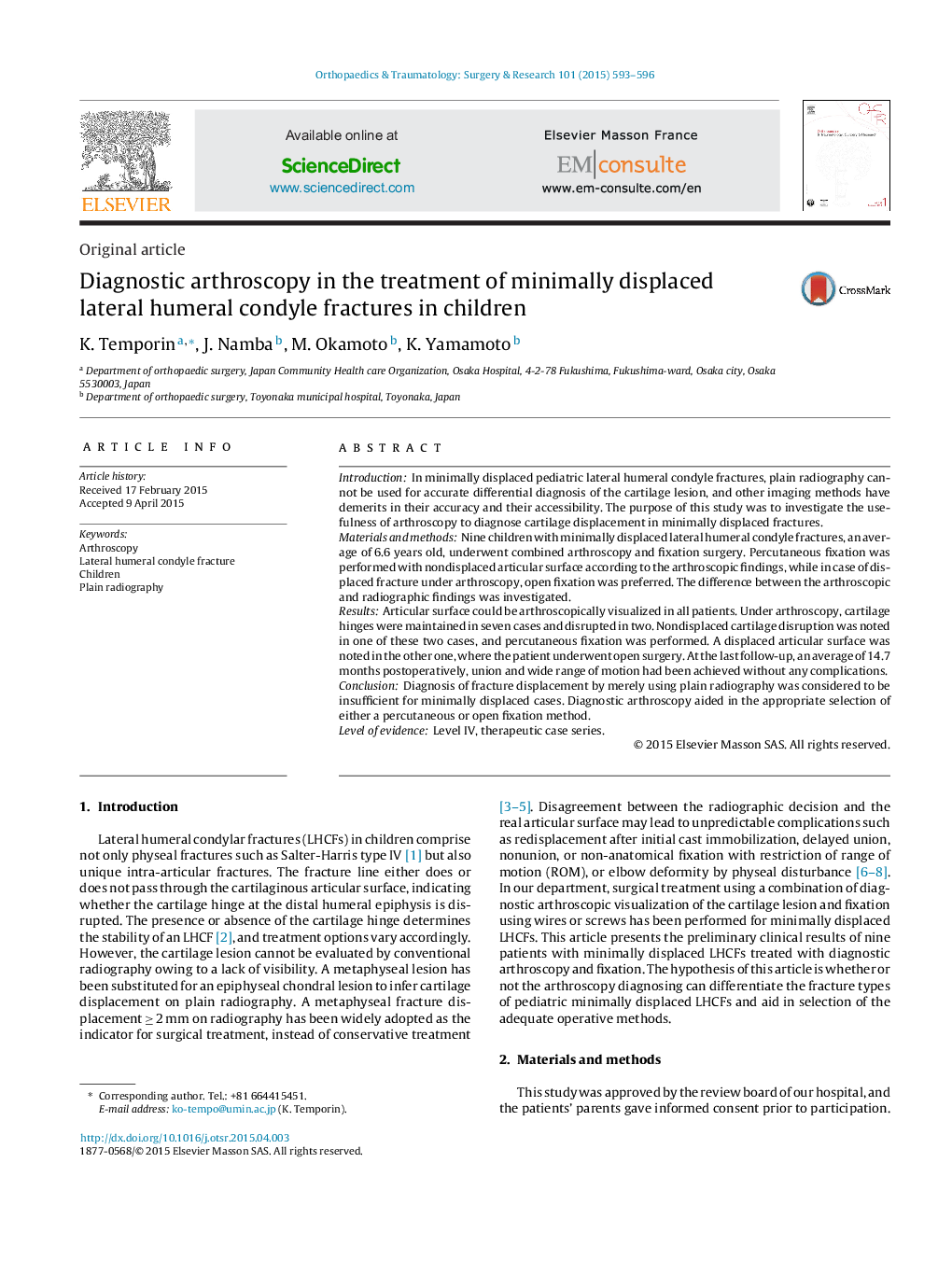| Article ID | Journal | Published Year | Pages | File Type |
|---|---|---|---|---|
| 4081051 | Orthopaedics & Traumatology: Surgery & Research | 2015 | 4 Pages |
IntroductionIn minimally displaced pediatric lateral humeral condyle fractures, plain radiography cannot be used for accurate differential diagnosis of the cartilage lesion, and other imaging methods have demerits in their accuracy and their accessibility. The purpose of this study was to investigate the usefulness of arthroscopy to diagnose cartilage displacement in minimally displaced fractures.Materials and methodsNine children with minimally displaced lateral humeral condyle fractures, an average of 6.6 years old, underwent combined arthroscopy and fixation surgery. Percutaneous fixation was performed with nondisplaced articular surface according to the arthroscopic findings, while in case of displaced fracture under arthroscopy, open fixation was preferred. The difference between the arthroscopic and radiographic findings was investigated.ResultsArticular surface could be arthroscopically visualized in all patients. Under arthroscopy, cartilage hinges were maintained in seven cases and disrupted in two. Nondisplaced cartilage disruption was noted in one of these two cases, and percutaneous fixation was performed. A displaced articular surface was noted in the other one, where the patient underwent open surgery. At the last follow-up, an average of 14.7 months postoperatively, union and wide range of motion had been achieved without any complications.ConclusionDiagnosis of fracture displacement by merely using plain radiography was considered to be insufficient for minimally displaced cases. Diagnostic arthroscopy aided in the appropriate selection of either a percutaneous or open fixation method.Level of evidenceLevel IV, therapeutic case series.
